“Human beings have recognised the magic and power of fermentation for as long as we have been human.”
~ Sandor Ellix Katz
Kombucha Love
Kombucha is a beloved beverage in the real food community, and my Kombucha Myths vs Truths and Tips and Troubleshooting articles are two of the most popular posts on this blog. Today, I’m adding to my kombucha series by exploring the hot topic: What’s the best way to brew kombucha? Many people automatically say continuous brew – hands-down. I’ve been brewing kombucha for many years now, and I’ve done both the batch brew method and the continuous brew. Below, I’ll share the pros and cons of each. Spoiler alert: One’s not always better for everyone, but depending on your circumstances, one method might be better for you.
The Pros of Batch Brewing
- It’s inexpensive and easy to get started.
- If you are the only person in your household drinking kombucha, it makes plenty. A medicinal dose of kombucha is 4-8 ounces daily.
- It brews slowly, making it easy to get the perfect flavor for you. This is because it stays a similar flavor for a few days before going to the next level of sour. You’re much less likely to accidentally brew kombucha vinegar.
The Cons of Batch Brewing
- It can be a bit of a hassle. You need to set aside a block of time to bottle the finished batch and start a new one. Since you empty the jar and remove the SCOBY, you can’t stop in the middle of this process. You also have to be careful that neither the SCOBY nor the tea gets contaminated during handling.
- If more than one person in your household is drinking kombucha, you will probably need to have more than one batch going at a time to keep up with demand. This doubles or triples the work.
The Pros of Continuous Brew
- If you have a family, this is the easiest way to make a lot of kombucha quickly. It serves a crowd.
- It’s easy to brew and maintain, because you simply add fresh sweet tea as you draw out the finished kombucha. There’s no need to remove the SCOBY from the vessel.
- It’s low-maintenance. You don’t have to clean the vessel unless the spigot clogs up. And you only need to separate the SCOBY once every month or so.
- It brews fast. If you’re someone who gets impatient waiting for your next batch of booch to brew, that doesn’t happen here. That’s because with batch brew, you have a 1:16 ratio of kombucha to sweet tea. (1 cup kombucha starter tea per gallon of sweet tea). That’s a lot of tea to ferment, and that takes time. With continuous brew, at least 20% of the container is starter tea (and often a higher %). That means you have a minimum 1:5 ratio of kombucha to sweet tea. There’s simply more kombucha to help with the fermentation. Additionally, continuous brew vessels usually produce larger SCOBYs, and they ferment faster as well.
- It provides stronger protection against mold. The kombucha starter tea helps protect against mold whether you’re doing batch or continuous brew. But the fact that continuous brew has a higher ratio of starter tea means it provides a higher level of protection.
- It also offers more protection against invasion by outside bacteria/yeast. The vulnerable phase in any fermentation is the start of the process, before the ferment gets established. Continuous brew is a constant ferment that stays established after the initial setup.
- It converts sugar more quickly. At first I thought continuous brew would have a higher sugar content, especially if you drink and replenish one glass at a time, constantly adding sweet tea to the container. It turns out the opposite is true. In batch brewing, there’s a “lag time” before the beneficial yeasts in the SCOBY and starter tea start converting the sugar. In continuous brew, yeasts are ready to go, and the kombucha gets sour much more quickly.
- It has a more diverse blend of beneficial acids and bacteria. This is because at each point in the brewing cycle, different acids and bacteria form. If you batch brew long enough, you can get an equally diverse blend, but many people prefer a slightly sweet kombucha and stop the brew early. With continuous brew, there is always long-brewed kombucha as part of the mix.
- Some of the containers are gorgeous. I love to be surrounded by beauty, and the continuous brew vessel in the photo above is a handmade stoneware vessel sold by Kombucha Kamp.
The Cons of Continuous Brew
- It’s more expensive to get started. Larger vessels cost more money.
- It brews fast. Yes, I listed this as a “pro” above, but it can also be a “con.” You need to keep track of the taste every day. It can go from a perfect sweet-sour flavor to vinegar-sour in just a day or two.
- If there aren’t many people drinking kombucha in your house, you are quickly going to have more than you need, and that can be a temptation to overindulge on kombucha. 4-8 ounces is a medicinal dose, and drinking more than that can start to harm instead of benefit your health. Why? A couple of reasons: (1) Kombucha contains sugar, unless it’s brewed to a full vinegar state that is usually undrinkable. The typical sweet-sour taste we like averages 4 teaspoons of sugar per 8-ounce serving. (2) Kombucha contains caffeine. It’s a much smaller amount than tea or coffee, but it adds up after numerous glasses. (3) We can overdo the probiotics. It’s not true that more is always better. For details on this and more, read my article: Kombucha Myths vs Truths.
Final Answer: Batch Brew or Continuous Brew?
I think it depends on how many people are drinking kombucha in your household. If you’re the only one, stick with batch brew. If there are two of you, you’re on the cusp and either method can work. If more than two people are drinking kombucha regularly, continuous brew is worth the investment.
I Recommend a Kombucha Heater No Matter What
The biggest jump forward in my kombucha brewing happened when I purchased a kombucha heater. I don’t live in a tropical climate, and my house temperature is often in the 60’s. That’s not a healthy brewing temperature for kombucha, which prefers 72-85 degrees instead. Not only do you get a thin SCOBY and a slow ferment, sometimes the SCOBY goes to sleep and stops fermenting altogether (this happened to me). You also get the wrong type of bacteria and yeast at that temperature. I used a seedling mat for my first year, and it made brewing possible, but my SCOBYs were still weak. Then I invested in a kombucha heater from Kombucha Kamp. It cut my brewing time in half, and my SCOBYs became incredibly thick and healthy. My brew also became fizzier, richer in flavor, and I believe richer in probiotics. These heaters can wrap around batch vessels or continuous brewers equally well.
RECIPES
Batch Brew Method – click here for recipe
Continuous Brew Method
- Kombucha Kamp has lots of wonderful vessels for sale, made from a variety of different kombucha-friendly materials.
- Fill 20% of your continuous brew vessel with unflavored fermented kombucha as starter tea, and add your SCOBY.
- Fill the rest of your vessel with sweet tea. To brew a gallon of sweet tea, boil 1 quart of filtered water in a stainless steel pan. Remove from heat and add 2 Tbsp. (or 6 teabags) of black, white or green tea. Don’t use any other types of tea. Black/white/green are all from the Camellia sinensis family, which is the preferred food for the kombucha SCOBY. Steep for 10 minutes and then remove the tea. Add 1 cup white sugar or evaporated cane juice, and stir until dissolved. Pour this sweet tea into a gallon pitcher. Fill the rest of the way with cold filtered water. Stir to blend and then test the temperature. It needs to be 85 degrees or lower before going onto the next step.
- Pour the sweet tea into the continuous brew vessel. Repeat step 3 as needed until your vessel is full, but always leave a few inches of breathing room at the top. Cover vessel with a tightly woven cloth. Don’t use cheesecloth – it’s too porous and flies can get in.
- Set it in a good location. You want the temperature to be between 72-85 degrees, out of direct sunlight, with good air flow (not in a cupboard). Use a kombucha heater, as needed.
- Start tasting your kombucha in a few days. Continuous brew kombucha ferments faster than batch brew. When it reaches the preferred level of sour-sweet for you, you can drain the fermented kombucha into bottles or mason jars to drink.
- You have two choices from here. You can drain a full gallon of kombucha at a time and then repeat the steps above. Or you can drain 1 glass at a time and just replace 1 glass of sweet tea as you drink the kombucha. If you do the latter, it’s easiest to keep a gallon of sweet tea in the fridge, for easy replenishing of the continuous brew. Always leave at least 20% of the fermented batch in the vessel, as starter tea for the ongoing brew.
- When you add sweet tea to the continuous brew vessel, it’s fine to pour it right on top of the SCOBY which may sink during this process but always rises to the top again. There is no need to stir the new tea mixture with the amount left from the previous batch; the fermentation process will blend it for you.
- Continuous brew SCOBYs thicken over time. Every month or so, wash your hands, carefully remove the SCOBY and separate the layers. Place one healthy layer back into the vessel and compost the rest (or give them to friends to start their own kombucha brews.)
- You only need to clean your vessel if the spigot becomes clogged with yeast particles (maybe once or twice a year). For a quick clean, just drain it below the spigot, remove the spigot to clean it, reinsert and pour fresh sweet tea over the top. If you want to clean the whole vessel, set aside the SCOBY and enough starter tea for the next batch. Bottle the rest of the brewed kombucha. Clean the container using white vinegar and warm water. Start a new continuous brew following the instructions above.
You May Also Be Interested In

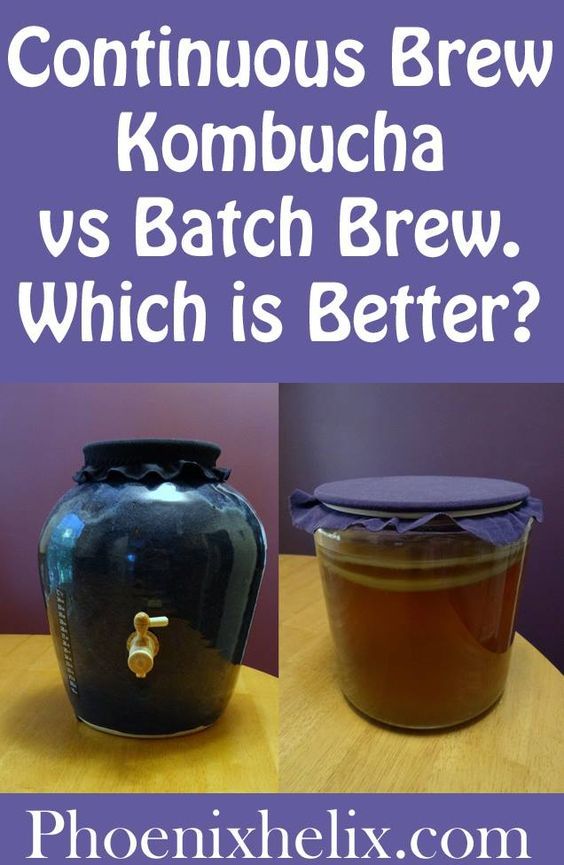
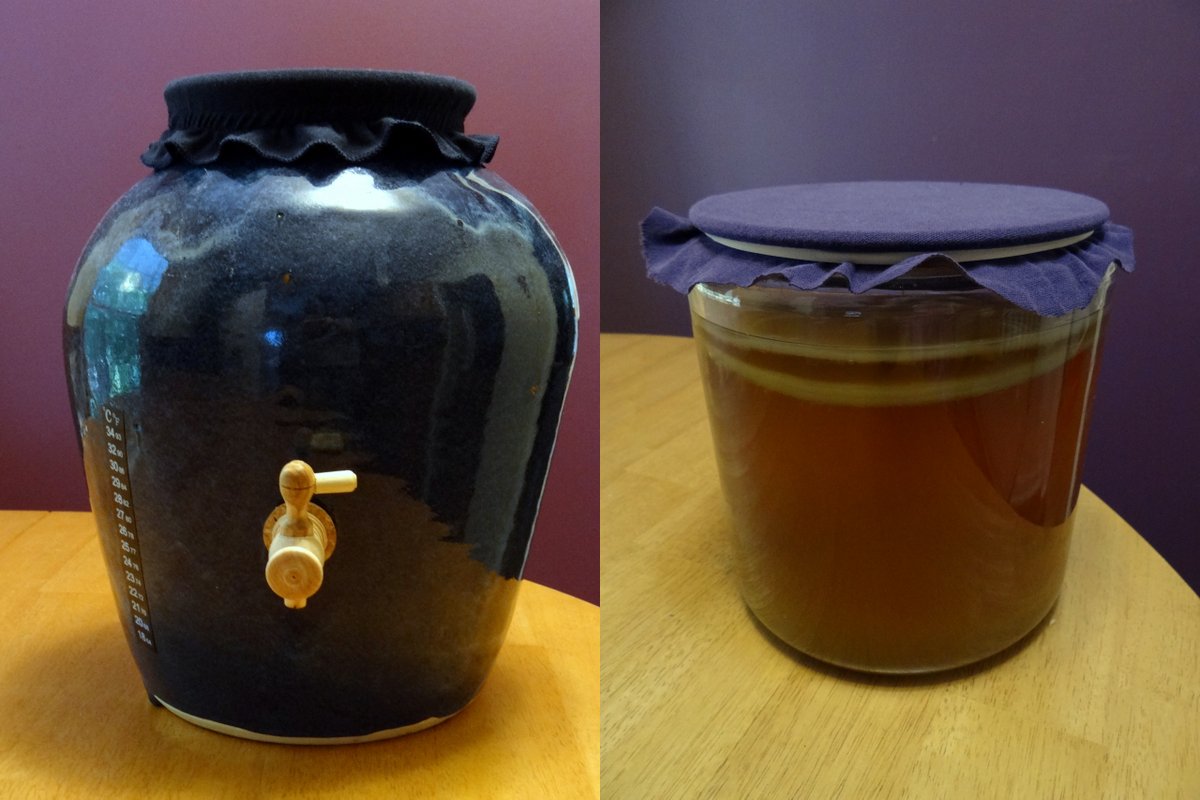
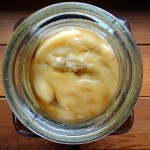
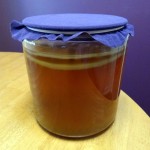
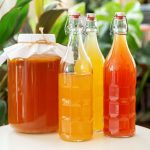
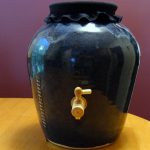
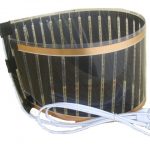
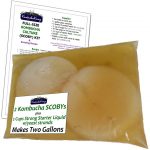
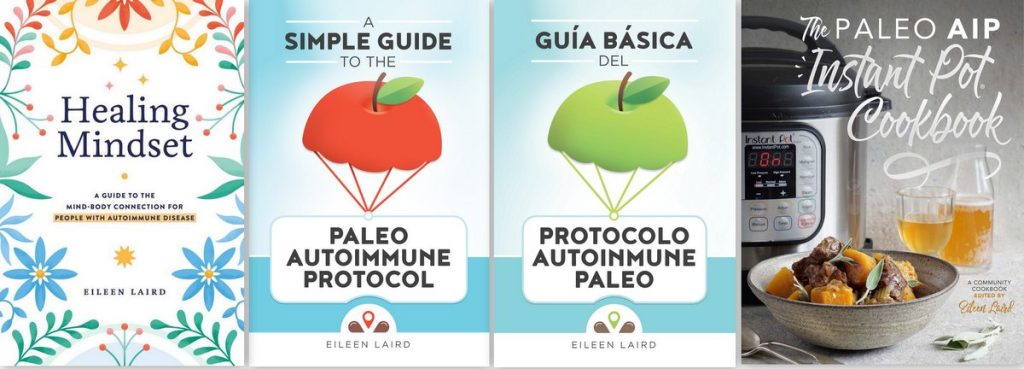
I use a seedling pad with great, steady success in an apartment that can get very cold when I am gone for several hours. The key to using an electric seedling pad is using a large plastic cooler. My cooler is large enough to place a 2-gallon kombucha jar and several mason jars for my water Keifer (tibicos).
The seedling pad and large cooler combination keeps everything at exactly a consistent temperature which I can vary. Normally, I keep it at 78 degrees.
Without the well-insulated cooler, the seedling pad is just not efficient for a few reasons.
Hi Nicolas. I did use a cooler, but my house must be cooler than yours. It didn’t keep my temperature that high. But then, we do turn our thermostat in the house down to 60 degrees at night. If this combination works for you, that’s wonderful! Happy brewing.
Hi Eileen,
I do a combo of batch and continuous – much easier than cleaning with each batch.
I have those party drinks dispensers, a large glass jar with a spigot. I let my kombucha brew until I like it – it brews slowsy enough for me to draw off a couple of glasses over the next few days. When it’s at it’s peak I draw off a bottle or two to keep me going, and then I add fresh batch.
So in my 4 litre jar, I would leave my scoby and about ½ a litre of brew. then I add a three litre mix to it and go again. It’s a batch brew done continuously, if that makes sense.
I swap containers every 6 months. I have two on a stand. One is always empty and clean ready for the next 6 month clear out. I even made pretty, elasticated skirts (to minimise the light), and tops for the jars from large tea towels. These get relayed, as well. It’s so easy.
Do a batch, continuously. If there’s too much to drink, my compost loves it.
Great tips, Jaya! Thanks for sharing.
I’m a long-time reader of yours and am grateful for the information you put out. I was originally intimidated by making Kombucha but I’m ready to take the plunge. You mention that you switched from a seedling mat to the year-round kombucha heater and had great improvements. Does the kombucha heater heat your vessel more than a seedling mat. Like I said, I’m new to kombucha and I live in a cold climate so heating will be important. I’ve read some people use seedling mats and expect a 10-20 degree temp improvement. I can’t find any information on how many degrees the kombucha heater mat is capable of increasing do you know?
Hi Shaw. In my experience, seedling mats only increase the temp. about 5 degrees. The kombucha heater wraps around the sides of your brewing vessel, so it’s much more effective, and there’s a dial that lets you move the temperature up or down. It’s also sold with a thermometer you stick on the side of your brewing vessel so you know what temperature it is at all times and can adjust accordingly. Happy brewing!
I’m new to brewing, in fact I’m on my 3rd brew. I used black tea and my brew is 5 days old and just tastes like old tea. Did something go wrong?
Did you add sugar, Becky? It should still taste like sweet tea at the 5 day mark, and fementation (the sour fizzy flavor) isn’t possible without sugar to feed the SCOBY. I’ve forgotten the suga once myself! See my Tips & Troubleshooting article for other suggestions.
I did but I used turbinado cane sugar for the first time. Should I dump and start a new batch using regular sugar? Thanks for your help and website. I listen to your podcasts while at work.
That’s likely the problem. Yes, I would dump the brew but keep the SCOBY, and start a fresh batch with some good brewed kombucha as your starter, and then some freshly brewed tea sweetened with regular sugar.
Thank you I have a new brew going
Hi Eileen. I have a heating pad that I used for a back ache, If I put the mason on top of it on a low setting, then must I keep it on until the fermentation is to where I want it. In other words, keep the pad on constantly or not use one at all?
Hi Victoria. Fermentation heating pads need to be on constantly, because a consistent temperature is important. I don’t recommend using a heating pad designed for muscle aches. I believe that would be a fire hazard since they aren’t designed to be left on long-term, and they aren’t waterproof. I recommend a seedling mat or the kombucha heater I describe in the article above.
Hi Eileen!
The women that taught me how to brew state that letting ferments go slower/at colder temperatures actually gives the ferment more beneficial properties. Heating the brew is not necessarily a BAD thing, but if you take sauerkraut as an example. A lot of people leave their ferments in their cellars for this specific reason. Each week, a new stage of the lacto-bacillic process is achieved, providing more beneficial bacteria. Not to sound like I’m contradicting what you’re saying….. I just think that if there are people like us(fighting autoimmune disease), we need all the help we can get!! ✌️
Xoxo,
Sara- fighting IBS, manic depression, and Hashimoto’s thyroiditis
Hi Sara. Different ferments prefer different temperatures. Sauerkraut indeed does thrive in colder temps – the 60’s are ideal and you shouldn’t ferment sauerkraut at temps higher than 75 degrees. In fact, if you try to ferement sauerkraut at the higher temperature that kombucha likes, the sauerkraut ends up smelling and tasting awful, because the bacteria balance is thrown off. This happened to me with my sauerkraut on a particularly hot summer. Kombucha is a totally different ferment. The SCOBY needs higher temperatures to thrive, and will go to sleep or even die if you try to brew it at 60 degrees or below. Borderline temps of the high 60’s produce a weak kombucha and thin SCOBYs. So, it’s not a matter of higher or lower temperatures being better for all ferments. It’s about knowing which temperature is right for each kind of ferment.
Couldn’t one use a smaller vessel for continuous brewing, if there’s only one person drinking it?
Debra, you could try it, but I don’t think it will work quite the same. One of the main reasons continuous brew is such a strong and fast brewing method is due to the large amount of brewed kombucha in the vessel. Most continuous brew containers are around 2-1/2 gallons. If you leave the minimum 20% of brewed kombucha in the container each time, that equals 8 cups. If you replace just 1 cup at a time, that leaves 39 cups. Comparatively, a 1 gallon continuous brew would only leave 2 cups of kombucha in the bottom at the minimum 20%, and 15 cups if you remove and replace 1 cup at a time. That’s a pretty big difference. It’s the large amount of kombucha that converts the sugar quickly and keeps the brewing process happening at a fast pace. I’m not saying it won’t work at all with a 1 gallon continuous brew, but it won’t work the same. It would probably be more of a hybrid technique with some of the qualities of continuous brew and some of the qualities of batch brew.
I use a one gallon container and have been for a couple of months I draw off about 4 cups at a time, replace them and draw more off a few days later when it tastes right again. When I was researching it was suggested to draw off 25% and leave 75% for continuous brewing. Since I’m the only one in my home who drinks kombucha it works for what I need.
Thanks for sharing your tips, Rae!
I’m curious about consuming multiple types of fermented beverages during the day. I’ve been having coconut milk kefir daily, and it’s taking some time for my body to get used to. (TMI-Looser stools, but not too bad.) Would it be a bad idea to drink Kombucha as well? I mostly want to add it to our options because the whole family doesn’t have the kefir on a regular basis.
Hi Jessica. Rotating ferments is actually recommended, because each has a different blend of bacteria. Just keep the portions small, and if you have negative side effects, reduce your portion even more or discontinue.
Wow, thanks, Eileen! I’ve only done batch brewing, and I admit, I got overwhelmed a few months ago and stopped brewing. I never tried continuous brew because I actually thought it would have more sugar and wouldn’t protect against mold as well as the batch brewing. Thanks for debunking those myths. I will try continuous brew now!
Yes – I was suspicious too until I experienced it for myself. Now, it makes sense to me. It’s all about the larger ratio of brewed kombucha in the vessel and the larger SCOBY. It really is a powerful brewing style. Enjoy!